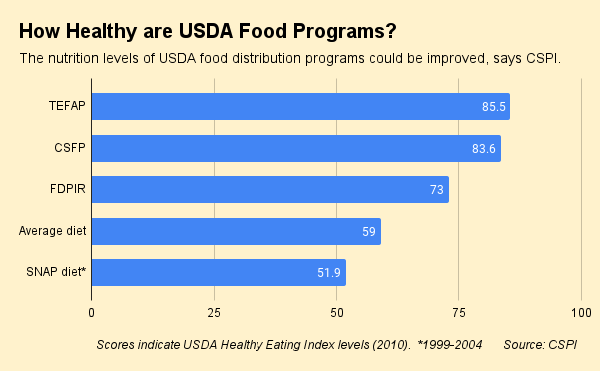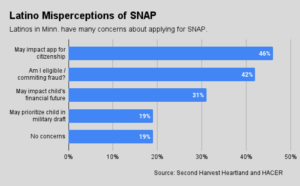The USDA recently gave a nice boost to farm-to-food bank projects, awarding more than $7.5 million to support them, up from $3.7 million in each of the previous two years. But the Center for Science in the Public Interest thinks funding for such projects should increase to at least $25 million.
In its recently released report, Policy Approaches to Healthier Food Banking, CSPI identified farm-to-food banking as one of three primary methods that would help increase the volume of nutritious food that gets distributed through food banks. It made its policy recommendations in light of its finding that out of 295 policies related to the charitable food system, only 43, or 14.6% prioritize donating nutritious foods over unhealthy foods.
In the Center’s view, changes to public policy are necessary to advance nutrition-focused food banking. “Policy interventions have great potential to shape the nutritional quality of charitable food-system food,” said the report.
CSPI recommended that states get involved in developing robust funding for farm-to-food bank projects, since federal funding — though growing — is not enough to support all the opportunities in each state. Maine, for example, got about $20,000 in federal grants to support blueberry harvesting, while the farm-to-food bank program run by Good Shepherd Food Bank, the state’s largest food bank, operates with the help of $1 million in state funding, the report said.
Another key recommendation for more nutritious food banking is for states to impose bans on organic waste, thereby driving donations of fresh food that would otherwise go to landfills. The report noted that Vermont Foodbank saw a 30% increase in food rescue from donors when a ban on landfilling more than one ton of food waste per week took effect.
The Center’s No. 1 recommendation is for the USDA to improve the nutritional quality of its distribution programs. Between TEFAP for emergency food, CSFP for senior food and FDPIR for tribal food, the agency provides billions of meals through the charitable food system. Yet the regulations governing those programs do not contain comprehensive nutrition guidelines.
Measured along the USDA’s Healthy Eating Index, the government food distribution programs are healthier than the average American diet (see chart). But they are not uniformly nutritious and could be held to a higher standard, CSPI said. “The USDA Food Distribution Program foods are relatively nutritious, but there is clear room for improvement,” said the report.
Interestingly, tax incentives — though frequently cited as a factor in motivating food donations by retailers — did not emerge as a significant factor in promoting donations of nutritious food or food in general. Retailers say they would donate even without the tax benefits, and that the benefits are small enough that they don’t drive behavior in a meaningful way. The report recommended further research into various types of tax benefits and their potential impact. — C.C.
Like what you’re reading?
Support Food Bank News









